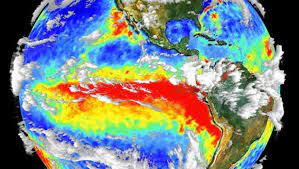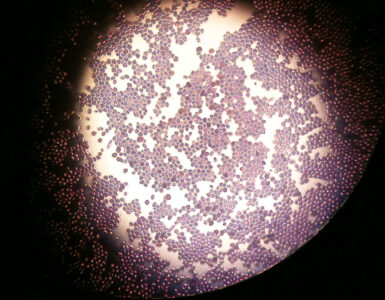By Rhodilee Jean A. Dolor
In a video message delivered to the attendees of an international conference on food security held in Berlin, Germany in June, United Nations Secretary-General Antonio Guterres warned that the world is facing a catastrophe because of worsening global food shortage.
Guterres said that the hunger crisis could get worse and the current food hunger issues could become a global food shortage in 2023.
“There is a real risk that multiple famines will be declared in 2022. And 2023 could be even worse,” he said, warning that harvests across Asia, Africa and the Americas will be impacted by rising costs of fertilizer and energy prices.
No country will be immune to the social and economic repercussions of such a catastrophe.”
Guterres’ warning is backed by data from the World Food Programme (WFP), the largest humanitarian organization that provides food assistance worldwide. According to the WFP, up to 828 million people go to bed hungry at night. The number of people facing acute food security is also increasing, surging from 135 million in 2019 to 345 million.
Earth’s Warming Temperature Impacts Food Supply
Several factors cause food insecurity and hunger, but the planet’s warming temperature is considered as a major contributor. The WFP says that climate change, which causes more frequent and intense extreme weather events, is one of the leading causes of global hunger.
In 2020, for instance, extreme climate events such as floods, storms and drought, were the predominant driver of acute hunger in 15 countries.
“Climate extremes can trigger irregular rainfall patterns and cropping seasons, pest infestations, diseases, intense temperatures,” the WFP said. “These stressors hurt both crops and livestock and make livelihoods so precarious that small disruptions can result in severe hunger.”
In a study published in the journal Nature food in November 2021, Jonas Jägermeyr, from NASA Goddard Institute for Space Studies, and colleagues looked at how climate change could impact the world’s major crops in the future.
The analysis showed that as early as 2030, corn yields are projected to drop by 24 percent as a result of Earth-warming greenhouse gas emissions. The researchers said that climate change will also reduce harvest yields for soybean and rice.
“Results suggest markedly more pessimistic yield responses for maize, soybean and rice compared to the original ensemble. Mean end-of-century maize productivity is shifted from +5% to −6% (SSP126) and from +1% to −24% (SSP585)—explained by warmer climate projections and improved crop model sensitivities,” the researchers reported.
Science and Food Security
Amid the increasing frequency and intensity of extreme weather events driven by climate change, researchers are exploring ways to improve food security as extreme heat, prolonged droughts and flooding threaten crop production and food supply.
In a study published in Plant Physiology on Sep. 22, researchers from Boyce Thompson Institute and Cornell University looked at the molecular mechanism of tomato that allows the fruit to thrive when it does not get enough water.
Carmen Catalá, from BTI and the School of Integrative Plant Science (SIPS) at Cornell, and colleagues were able to identify a number of genes involved in water stress. The findings may lead to tougher breeds of fruits that can survive hostile environments.
“We can now begin to select candidate genes that could help breeders develop fruit that can adapt to drought conditions, and not just tomatoes but also grapes, apples, and fleshy fruit in general. That is a long-term potential application of these data,” said Catalá. The researchers said they also discovered a way to make tomatoes more resistant to future water droughts.
“When we sowed the seeds from treated plants, we found that the seedlings from stressed tomatoes showed improved recovery from water stress in comparison to seedlings from control tomatoes,” said researcher Philippe Nicolas, from BTI.
In another study published in Plant Molecular Biology on June 22, researchers from the RIKEN Center for Sustainable Resource Science also investigated a way for plants to withstand heat stress in a bid to make crops more resilient to global warming.
Using lettuce and thale cress in their experiments, study researcher Motoaki Seki and colleagues found that applying ethanol, a common alcohol, to plants prior to heat exposure makes them more tolerant to heat stress. “Chemical priming, using safe agents, that can flexibly activate adaptive regulatory responses to adverse conditions, is a complementary approach to genetic improvement for stress adaptation,” the researchers wrote.
Researchers from the King Abdullah University of Science and Technology (KAUST) in Saudi Arabia also found a way to improve the tolerance of plants against drought and salinity. The method also improves growth, yield and the nutritional value of plants.
In the study published in Metabolic Engineering in March, Juan Moreno, from KAUST, and colleagues found that introducing a single gene of the carotenoid pathway into tomatoes increased fruit yield by up to 77 percent and enhanced the beta carotene content of the fruits by 20-fold.
“Our findings pave the way for developing a new generation of crops that combine high productivity and increased nutritional value with the capability to cope with climate change-related environmental challenges,” the researchers wrote in their study.
Other Factors That Drive Hunger
While climate change largely contributes to world hunger, it is worth noting that there are other key contributors. Logistics, for instance, is an issue that largely impacts people’s access to food. The United Nations Environment program (UNEP) said that 14 percent of all food produced for consumption is lost before reaching consumers.
According to UNEP’s Sustainable Food Cold Chains report, developing countries may save 144 million tons of food annually if they have the same level of food cold chain infrastructure that developed countries have.
Other factors that the WFP cites as drivers of global hunger include conflicts, poverty which call for competent political interventions.
Science may not hold the answer to feeding the millions who sleep with empty stomach at night. Still, it is fortunate that researchers are looking for ways to address a primary concern in feeding the world—ensuring the production of enough food.
Taking Control of The Food System
Governments and corporations are making large investments in agriculture and come up with systems that affect farmers and consumers.
In the Netherlands, the Dutch government is buying out farmers to close down livestock production in a bid to reduce nitrogen emission produced by animal waste. China is also buying up farmlands in other countries. At the start of 2020, Chinese firms already control 192,000 agricultural acres in the US worth $1.9 billion.
Large corporations likewise monopolize the industry and centralize food production. Only four companies, for example, now control over 60 percent of the seeds in the global market.
Unfortunately, farmers and food consumers do not always benefit from governments and large companies taking control of the industry. Dutch farmers are protesting against the government’s move claiming that it will put many of them out of business.
Foreign purchases of farmlands may also artificially increase the value of these lands, which will deprive local beginning farmers the opportunity to cultivate these lands.
Monopoly and centralized operation also make the large segment of the population largely reliant on large centralized farms, shifting the focus out of small scale farmers.
According to the United Nations Environment Programme (UNEP), industrial production of livestocks may foster antimicrobial resistance. Large-scale farming is also associated with reliance on pesticides and degradation of the soil, which could further threaten food security and human health.
“Large volumes of chemical fertilizers and pesticides are used to increase agricultural yields and humans may be exposed to these potentially-toxic pesticides through the food they consume, resulting in adverse health effects. “
The standardization of seeds and plants may also bring profits to their producers, but can also result in a new set of problems for the end consumers.
“This produces a very unbalanced kind of control of food and resources,” the non-profit Non-GMO Project explained.
“This monopolization means that our food systems — and the ecosystems they rely upon — are based on a limited number of crops. The more reliant we are on that limited number of crops, the more our fates are tied to theirs. As the effectiveness of herbicide-tolerant and pest-resistant crops fail, it’s well past time to diversify our food system portfolio.”









